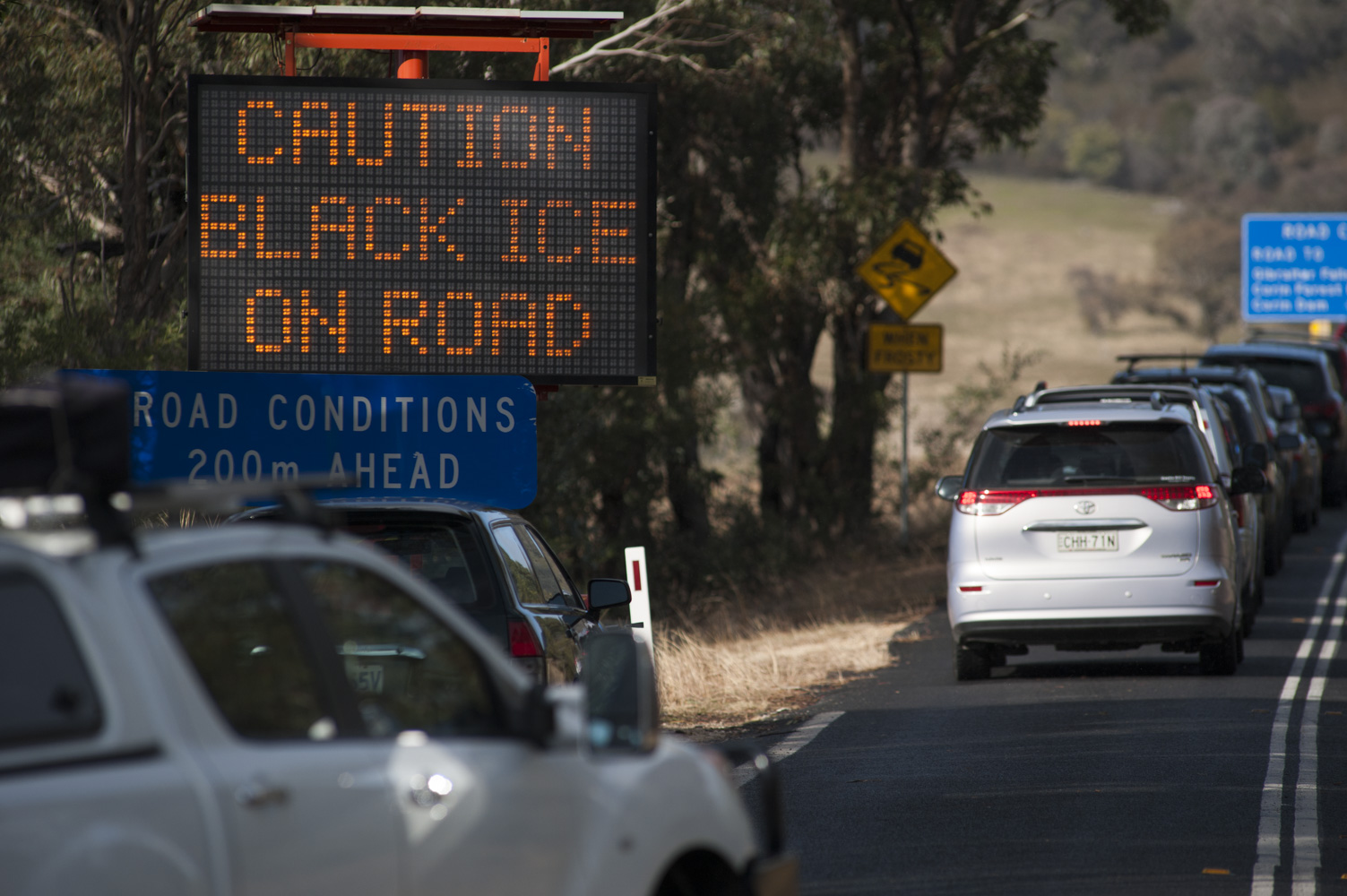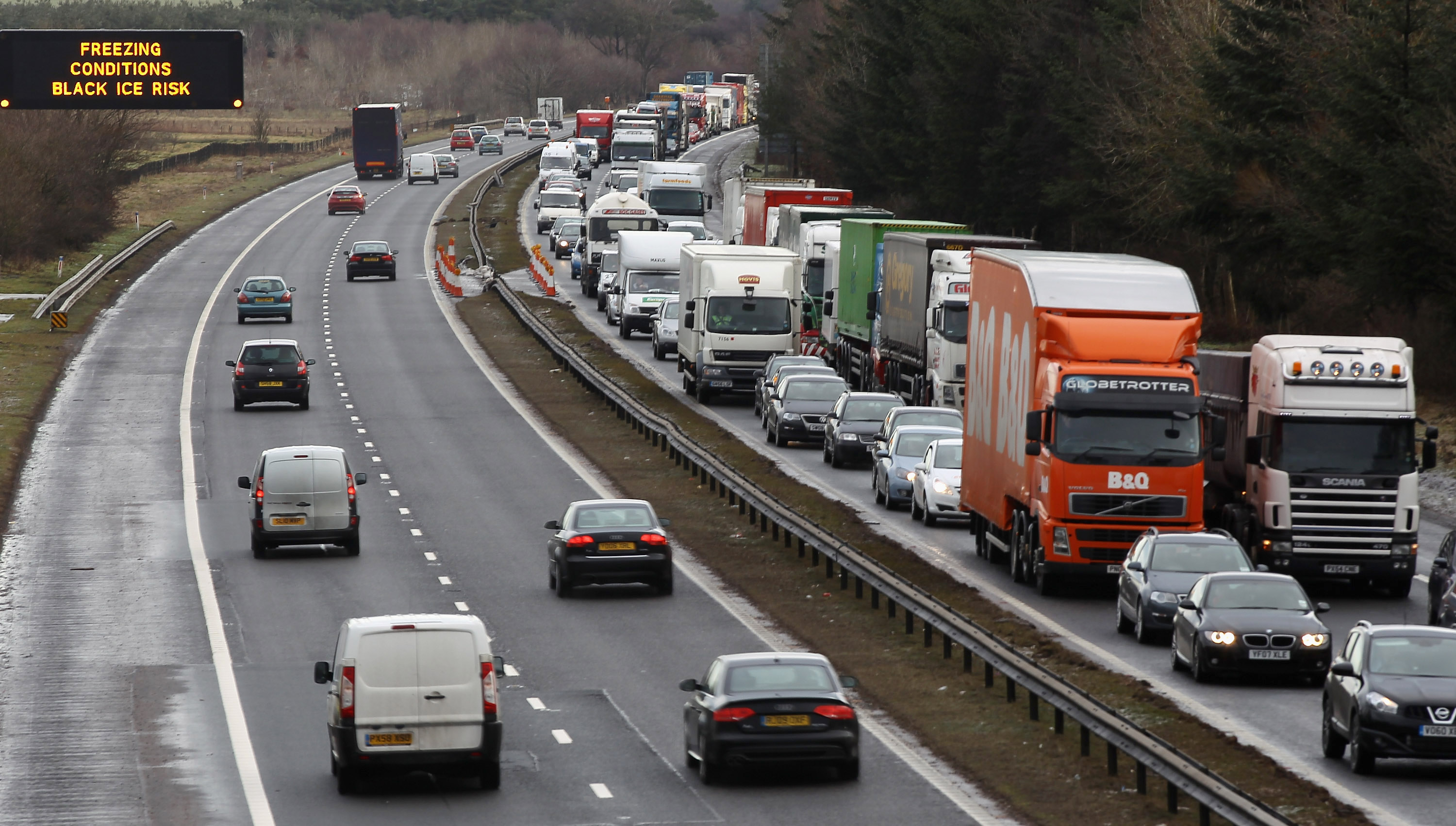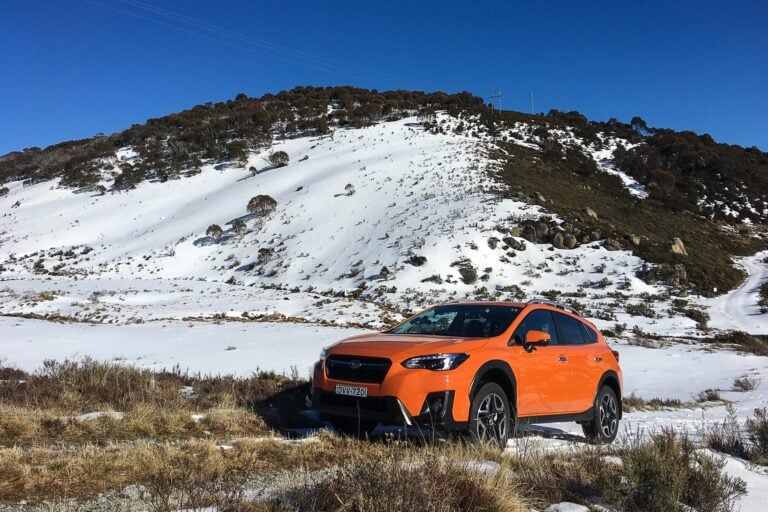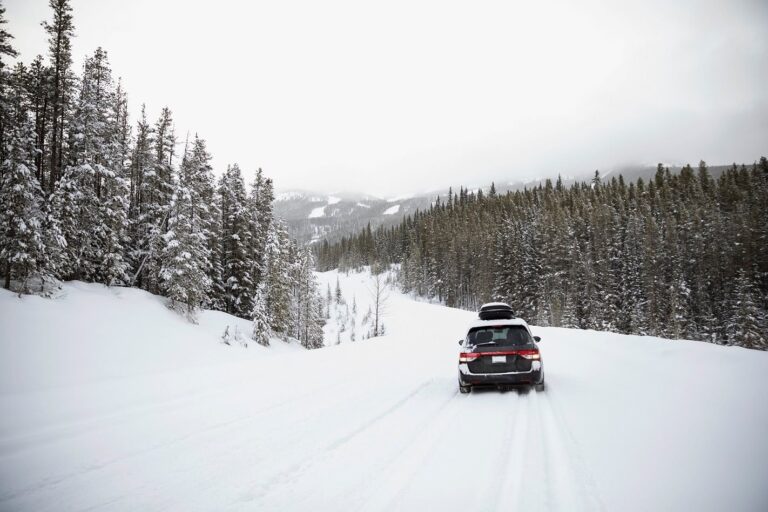
Black ice is a thin coating of ice which forms when surface water or dew freezes on surfaces such as roads, which can make them very slippery.
It’s also known as clear ice, which is a more accurate term as it’s not black, but transparent, which makes it difficult to differentiate from a normal wet surface.
How to spot black ice
Black ice forms in cold areas usually at night or early mornings, or later in the day if the road isn’t exposed to direct sunlight.
It’s thin crust means it coats the road like varnish, with no bubbles, cracks or white frosty streaks, which makes any patches very difficult to identify when approaching in your car.

You are more likely to hit black ice on shady roads through forests or under overpasses. It is also prevalent on top of bridges and overpasses due to the road also being cold underneath.
When driving, it’s important to know if you’re travelling through an area prone to black ice and to check weather forecasts and traffic reports.
Roads that are prone to it may have warning signs and, in some instances, equipment which will detect black ice that will set off flashing amber lights when it is present.
In other locations look out for changes in the road texture ahead. If you see a glossy area standing out from the rest and the conditions are right, chances are it will be black ice.
What to do if you hit black ice
Being prepared for the prospect of black ice, slowing down in high-risk conditions and not exceeding advisory speed limits will go a long way in helping you avoid or react to a slippery situation. Also be sure to keep a safe distance from any vehicles in front.

The good news is these patches don’t cover very long stretches of road so if you’re on a relatively straight stretch you should be able to slide off in the same direction.
If you hit a patch of black ice and lose grip:
- Try not to overreact
- Use the steering wheel, brakes and accelerator as little as possible to allow your vehicle to get to the other side. Struggling with the steering or stomping on the brakes will likely lead to spinning or sliding off the side of the road
- Try keeping the steering wheel straight and if you feel the car’s rear-end sliding left or right, make a very gentle turn of the steering wheel in the same direction
- To slow down gently, lift your foot from the accelerator. As you reduce speed you’ll start gaining more steering control. Shifting into a lower gear will also help gain control
- If the car starts to veer off road and there is a hard or dirt shoulder it probably won’t have black ice, so be prepared for the wheels to gain traction and use that space to regain control
- If the car ends up skidding on black ice, let the anti-lock braking system (ABS) do its job by putting your foot on the brake firmly, but not too fast, so the system can pump the brakes as you skid.






